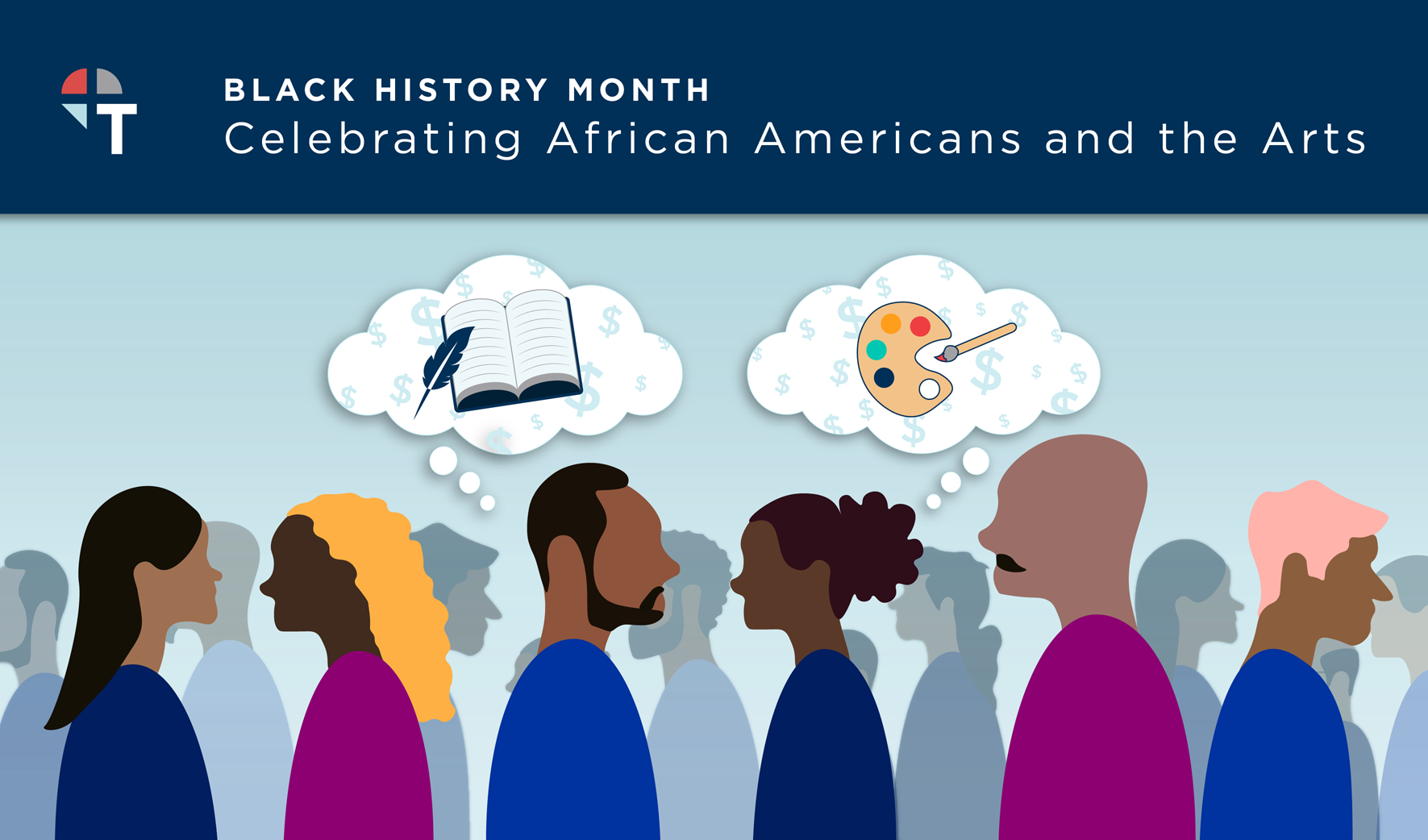Implementing a few high-impact financial wellness benefits can help.

Racial disparities in debt are harming your workers and preventing your organization from reaching its full potential.
This Black History Month we remember: All debt is not created equal nor distributed equally.
Debt “remains underappreciated as a driver of racial wealth gaps,” says Aspen Institute’s Disparities In Debt: Why Debt Is A Driver In The Racial Wealth Gap.
Record levels of debt
Total household debt hit a new record of $17.5 trillion in the fourth quarter of 2023, per the Federal Reserve Bank of New York’s latest data, released this week.
Credit card balances also hit a new record, of $1.13 trillion.
“We’re seeing more people carrying more debt for longer periods of time,” says Bankrate’s senior industry analyst Ted Rossman.
“For example, 49% of credit cardholders carry debt from month to month, up from 39% in 2021.”
The fact that more workers are carrying debt means that it’s getting harder for people to get by, paycheck to paycheck, without resorting to debt.
This is bad news for your workers, especially your workers of color, because debt isn’t some neutral phenomenon that affects everyone equally.
Pervasive, systemic, destructive debt
As Disparities in Debt concludes, Black or African American and Latino/Latina/Latinx identifying households tend to hold fewer or less valuable assets and more bad debt than white households.
These disparities are pervasive, systemic, and destructive both financially and in terms of “diminished health and well-being and reduced trust in institutions.”
While strict definition can be elusive, bad or harmful debts are “non-loan debts such as medical bills and public fines and fees, and alternatives to mainstream credit such as payday, vehicle title, and private student loans…They can be barriers to employment and medical care, and they can be entry points for entanglement in court systems.”
In other words, bad debt leads to higher debt and lower credit scores, i.e. financial insecurity, rather than to financial security, with ramifications that extend far beyond personal finance:
A major study of studies “found in nearly 80% of the studies a link between being in debt and poorer physical health.” (Student loan debt appeared to weigh especially on mental health.)
What’s an employer to do?
Employee Financial Wellness Programs
According to at least one eminent observer, employers, you have an opportunity to strengthen your organizations and boost the financial health of your workforces, while helping to close the racial wealth gap, through Employee Financial Wellness Programs (EFWP).
In his recent, illuminating, Wharton Pension Research Council Working Paper №2023–25, more affectionately known as Improving the Financial Security of Workers of Color through Employee Financial Wellness Programs, Bipartisan Policy Center Fellow John Kalamarides explores how employers can deploy employee financial wellness benefits to improve your workers’ financial health and contribute to greater wealth equity:
“Employers have an opportunity through EFWPs to impact the financial security of their workers, especially Blacks and Hispanics, by voluntarily joining a PEP at little or no cost. DC sponsors can adopt the newly available provisions of automatic enrollment, escalation, lifetime income solutions, PLESAs, and student loan matches. Employers can offer healthcare, life insurance, and PFML to manage their workers’ morbidity and mortality risks. To assist workers in optimizing their next-dollar-of-benefits spending, employers can evaluate and offer digital benefit administration solutions with AI-assisted guidance. In any case, employers would do well to assess workers’ financial well-being and establish goals and programs to enhance their financial outcomes to increase their productivity, reduce absenteeism, and enhance loyalty.”
While there’s a lot (of acronyms) to unpack here, we focus on three financial wellness benefits with high potential for meaningful impact, especially for workers (of color) who are living paycheck to paycheck, which is to say, most of them: Pooled Employer Plans (PEPs), Pension Linked Emergency Savings Accounts (PLESAs), and student loan matches.
But before we turn to them, a quick aside.
The importance of personal financial coaching
While admittedly beyond the scope of Improving the Financial Security of Workers of Color through Employee Financial Wellness Programs, we at TrustPlus continue to be amazed but not surprised at the lack of attention in the literature (academic, governmental, and commercial) focused on the importance of personal financial coaching, specifically, as opposed to DIY employee financial education resources and generic financial literacy workshops which data suggest have little to nothing to do with changing financial behavior.
Ok, back to solutions for employers.
Save for retirement, emergencies; payoff student loan debt
Secure 1.0 and new provisions in the historic retirement legislation Secure 2.0 help employees to save for emergencies and retirement and to pay off student loans.
Together, they have the potential to boost the financial health of your workers and contribute to closing racial disparities in retirement savings, student loan debt, and in access to asset-building benefits.
Pooled Employer Plans: A relatively new solution in the benefits space, thank you Secure 1.0, PEPs allow multiple, unrelated employers of any size to participate in a single retirement plan that is a defined contribution plan qualified under Internal Revenue Code section 401(a).
According to the American Academy of Actuaries:
“The intent behind PEPs is to expand retirement plan coverage among (primarily smaller) employers that have not adopted a plan due to cost, liability exposure, and/or compliance and administrative burdens. PEPs have the potential to be less expensive than single-employer DC retirement plans, limit liability, and enable employers to outsource most of the compliance and administrative efforts associated with operating retirement plans.”
PEPs hold the promise of extending access to retirement plans to more workers, especially lower-income workers of color who are overrepresented in jobs that don’t offer retirement plans (White households have about double the median balance in retirement accounts than households of all other races according to the Government Accountability Office’s Growing Disparities in Retirement Account Savings).
Pension-linked emergency savings accounts (PLESAs): Since the top financial stressor for employees is now a lack of emergency savings and making it to the next paycheck, savvy employers are doing a deep dive on how to roll out emergency savings benefits made possible under Secure 2.0.
Intended to boost retirement savings among workers, Secure 2.0 enables sponsors of 401(k), 403(b) and governmental 457(b) plans to offer non-highly compensated employees pension-linked emergency savings accounts in plan years beginning after December 31, 2023.
Student loan matches: The financial stress of student loan debt takes a toll on your workers’ physical and mental health and productivity, and then on your bottom line or social impact.
Too often, day-to-day expenses forces your employees to choose between investing in their retirement savings plans now or paying off the cost of their education. The median monthly payment of federal borrowers is $250, according to the Education Data Initiative. It’s a toxic choice.
Enter Secure 2.0 and its student loan payments match. Beginning with contributions after December 31, 2023, employers can contribute to an employee’s retirement based on the amount they paid toward their student loan balance, a student loan employer match.
Under the new law, sponsors of 401(k), 403(b), governmental 457(b) plans, and savings incentive match plans for employees of small employers (SIMPLE plans) can make matching contributions to employees’ qualified student loan payments (QSLPs) as if they were pretax, Roth or after-tax contributions.
For plan years starting after December 31, 2023, employers can offer the QSLP match even if employees aren’t contributing to a plan, making it possible for employers to eliminate that toxic choice employees often make between investing in retirement and paying down student loan debt.
At the end of the day, as Kalamarides notes, “EFWPs and benefits are necessary yet insufficient to remove racial wealth disparities.” They will not on their own close the racial wealth gap.
But they’re a welcome addition to the conversation.
Schedule a time to speak with TrustPlus about harnessing the power of financial wellness benefits to strengthen your organization while boosting wellness and equity among your workforce.






